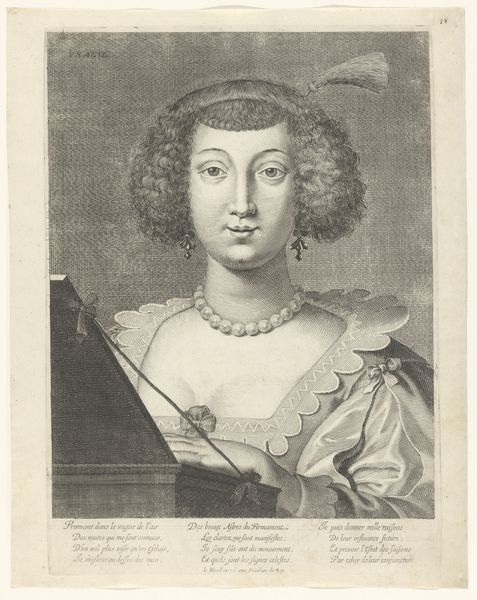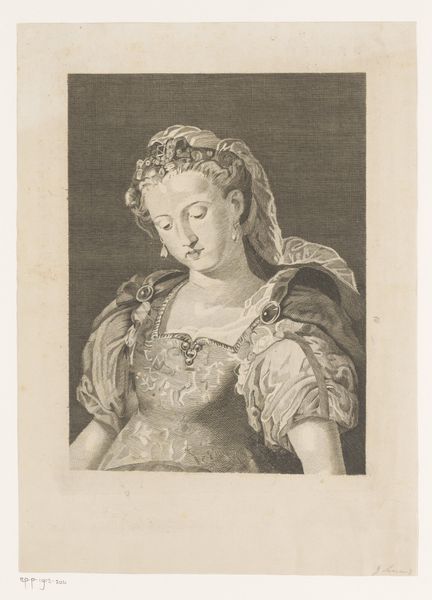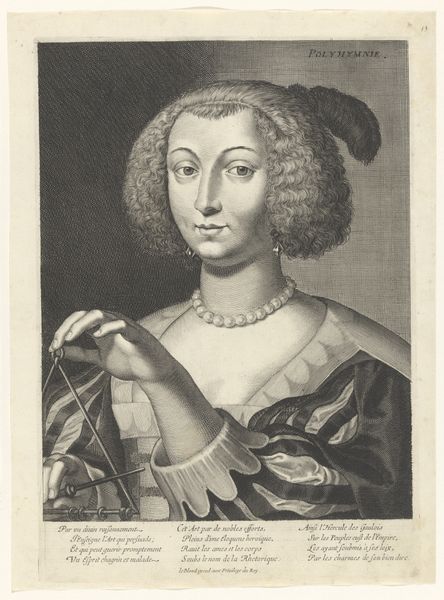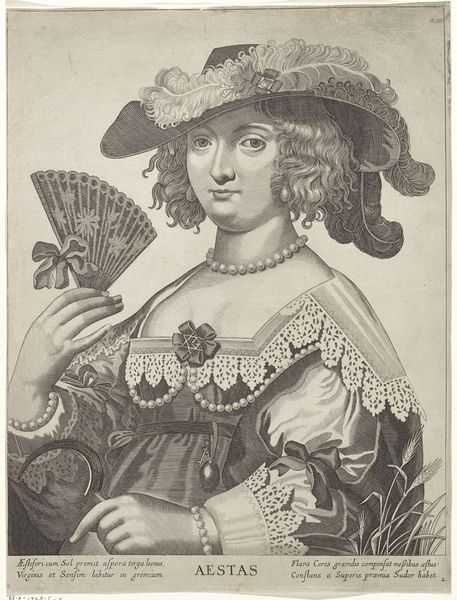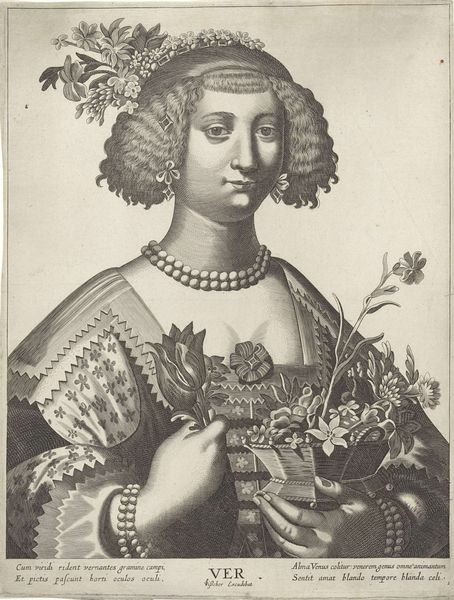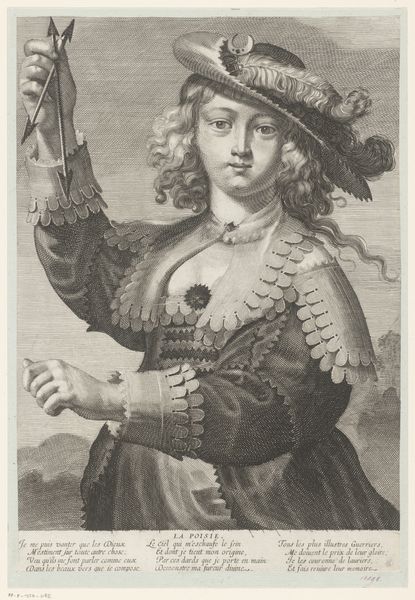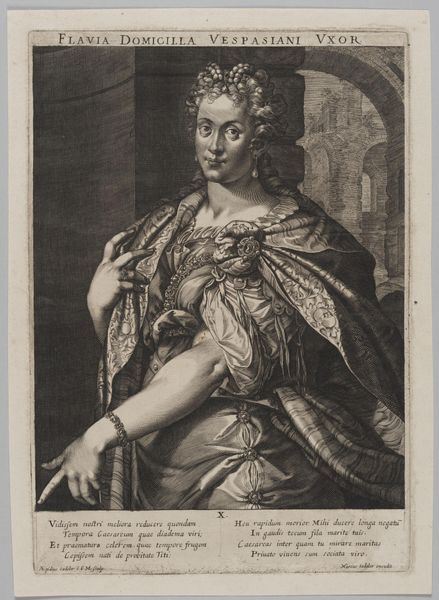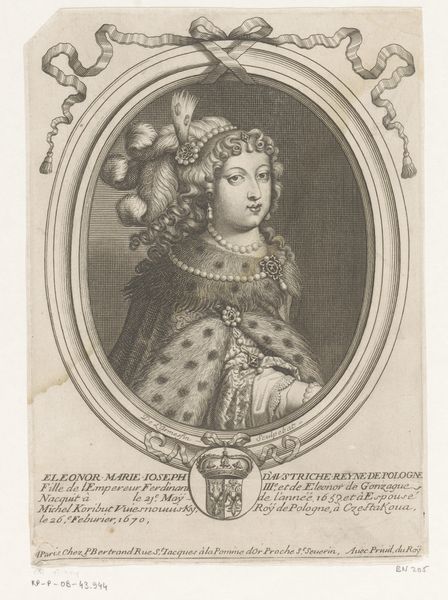
engraving
#
baroque
#
portrait reference
#
19th century
#
portrait drawing
#
history-painting
#
engraving
Dimensions: height 320 mm, width 280 mm
Copyright: Rijks Museum: Open Domain
Editor: This is "Clio," an engraving by Jean Leblond, dating from around 1630 to 1635. I’m struck by the detail, especially in the hair, but the overall impression feels… controlled. How do you interpret this work? Curator: Indeed. The meticulous lines, indicative of engraving, point us towards the controlled dissemination of ideas. Clio, the muse of history, wasn’t just a passive recorder; she was an active interpreter. Leblond's rendering speaks volumes about the act of creating and controlling historical narratives during a turbulent time in European history, the era of emerging nation-states and religious conflicts. What power dynamics do you observe represented? Editor: I hadn’t considered the control aspect so directly. I see that the figure holds a book. Perhaps, given it’s Clio, the control lies in what stories are passed down, what's deemed worthy of remembering. Curator: Precisely. And by extension, who gets to decide that? In Leblond’s time, this kind of imagery circulated within specific, often elite, circles. Think about the printing press, the accessibility—or lack thereof—to different social classes and genders. Who was invited to participate in the grand narrative of the Baroque era? Editor: So, it’s not just a portrait of a muse, but also a commentary on the very act of writing and shaping history itself, and by whom! The questions of accessibility and power woven into the work are now more visible. Curator: Precisely. By situating "Clio" in its historical context, we uncover a powerful reflection on who has the authority to write and control history. This encourages us to critically examine historical accounts and identify silenced voices. Editor: Thanks, that’s given me a lot to think about regarding the construction and potential bias inherent in historical representations.
Comments
No comments
Be the first to comment and join the conversation on the ultimate creative platform.
